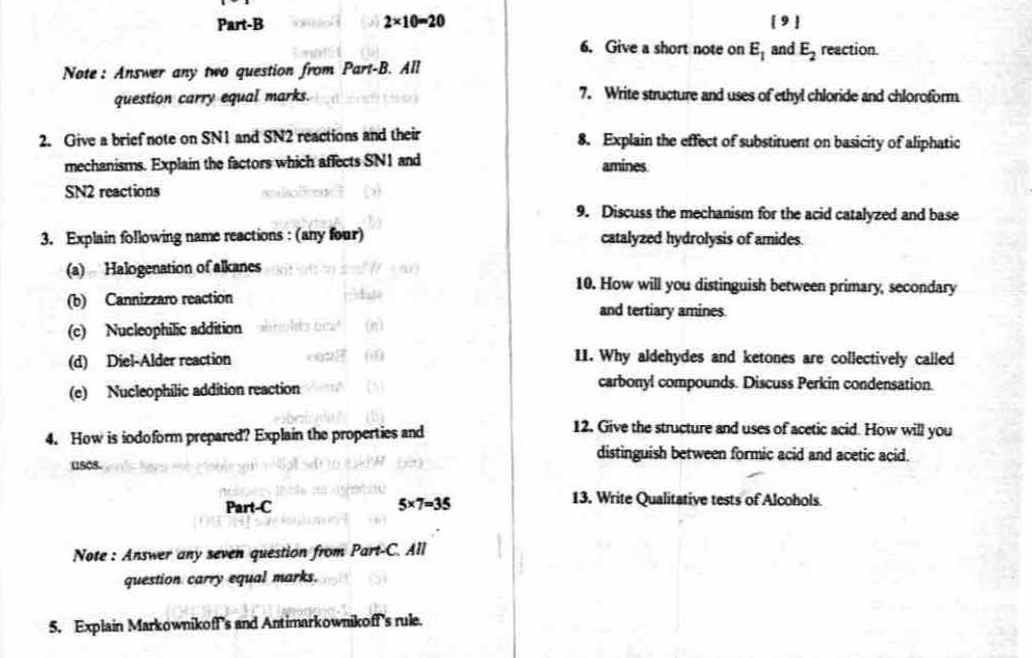Give a brief note on SN1 and SN2 reactions and their mechanisms. Explain the factors which affects SN1 and SN2 reactions.

Understand the Problem
The question set comprises various topics in organic chemistry, asking for explanations and discussions on specific reactions, properties of substances, and mechanisms involved in different chemical processes.
Answer
SN1 is a two-step reaction favored by stable carbocations and polar protic solvents, while SN2 is a one-step reaction, influenced by sterics and polar aprotic solvents.
SN1 reactions follow a two-step mechanism involving the formation of a carbocation intermediate and are favored by polar protic solvents. SN2 reactions follow a one-step mechanism with simultaneous bond-making and breaking and are favored by polar aprotic solvents. SN1 rate is affected by the stability of the carbocation, solvent, and the presence of good leaving groups. SN2 rate is influenced by steric factors, solvent, and the strength of the nucleophile.
Answer for screen readers
SN1 reactions follow a two-step mechanism involving the formation of a carbocation intermediate and are favored by polar protic solvents. SN2 reactions follow a one-step mechanism with simultaneous bond-making and breaking and are favored by polar aprotic solvents. SN1 rate is affected by the stability of the carbocation, solvent, and the presence of good leaving groups. SN2 rate is influenced by steric factors, solvent, and the strength of the nucleophile.
More Information
SN1 and SN2 reactions are key concepts in organic chemistry, differentiating in terms of mechanism and conditions that affect their rates.
Tips
A common mistake is confusing the role of solvents; remember SN1 prefers polar protic solvents and SN2 prefers polar aprotic solvents.
Sources
- Comparing the SN1 and SN2 Reactions - Master Organic Chemistry - masterorganicchemistry.com
- Comparison of SN1 and SN2 Reactions - Chemistry LibreTexts - chem.libretexts.org
AI-generated content may contain errors. Please verify critical information